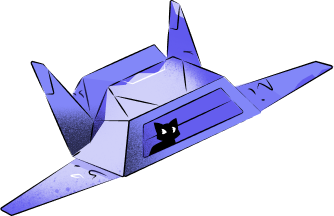At BeanMachine, we leverage a comprehensive suite of technology tools and platforms to deliver high-quality software solutions efficiently and effectively. Here’s an overview of the key technologies and tools we typically utilize:
Frontend Development:
JavaScript: As the backbone of web development, we extensively use JavaScript and its modern frameworks and libraries. JavaScript’s versatility makes it ideal for creating interactive and dynamic user interfaces.
React: A JavaScript library for building user interfaces, particularly single-page applications. Its component-based architecture makes it efficient and flexible for developing complex applications with rich user interfaces.
Vue.js: A progressive JavaScript framework used for building UIs and single page applications. It’s lightweight and adaptable, making it a great choice for projects where flexibility and ease of integration are key.
Express.js: While primarily a backend framework, Express.js is crucial in the JavaScript ecosystem for building web applications and APIs. It works seamlessly with Node.js and is known for its speed and minimalistic structure.
Angular: A robust JavaScript framework for building dynamic web applications. It’s well-suited for large-scale applications due to its strong typing, dependency injection, and powerful CLI.
TypeScript: A superset of JavaScript that adds static typing. It enhances code quality and readability, which is crucial for maintaining large codebases.
HTML5 and CSS3: The fundamental technologies for structuring and presenting content on the web. We ensure our HTML and CSS practices are up to date with the latest standards for accessibility, responsiveness, and cross browser compatibility.
Backend Development:
Node.js: A JavaScript runtime built on Chrome’s V8 JavaScript engine. It’s used for building scalable network applications, particularly suited for handling numerous simultaneous connections with high throughput.
Python: Known for its readability and efficiency, Python is used in various applications, from web development to data analysis. Frameworks like Django and Flask allow for rapid development of secure and maintainable websites.
Java: A highly portable, object-oriented language used for a wide range of server-side applications. It’s known for its performance, security features, and robust library ecosystem.
PHP: A popular general-purpose scripting language that is especially suited for web development. It’s fast, flexible, and has a vast ecosystem.
Laravel: A PHP web application framework with expressive, elegant syntax. Laravel aims to make development tasks easier by easing common tasks such as routing, sessions, caching, and authentication.
Ruby on Rails: A server-side web application framework written in Ruby. It’s a model-view-controller (MVC) framework, providing default structures for a database, a web service, and web pages.
Spring Boot (Java): An extension of the Spring framework that simplifies the initial setup and development of new Spring applications. It’s particularly good for microservice architectures.
Django (Python): A high-level Python Web framework that encourages rapid development and clean, pragmatic design. It’s known for its “batteries-included” philosophy.
.NET: A framework from Microsoft used for building a variety of applications, with a strong emphasis on Windows platforms. It’s known for its vast framework libraries and support for multiple languages like C#.
Mobile Development:
Swift: The preferred language for iOS app development. It’s modern, fast, and safe, with features that ensure fewer crashes and memory leaks.
Kotlin: A modern language that fully supports Android development. It’s concise, expressive, and designed to enhance developer productivity.
React Native: A framework for building native apps using React. It allows for cross-platform development, sharing a single codebase across iOS and Android, which accelerates development and reduces costs.
Database Technologies:
SQL databases like PostgreSQL, MySQL, and Microsoft SQL Server. NoSQL databases like MongoDB, Cassandra, and Firebase.
Version Control Systems:
Git (with platforms like GitHub, GitLab, or Bitbucket) for source code management.
Continuous Integration/Continuous Deployment (CI/CD):
Tools like Jenkins, CircleCI, Travis CI, and GitLab CI for automated testing and deployment.
Docker and Kubernetes for containerization and orchestration, ensuring consistency across environments.
Project Management and Collaboration Tools:
Agile project management tools like Jira, Trello, or Asana.
Communication platforms like Slack and Microsoft Teams.
Document sharing and collaboration through Confluence, Google Workspace, or Microsoft 365.
UI/UX Design Tools:
Figma, Adobe XD, and Sketch for interface design and prototyping.
InVision and Zeplin for collaboration and handoff between design and development teams.
Quality Assurance and Testing Tools:
Automated testing frameworks like Selenium, Jest, and Mocha. Performance testing tools like JMeter and LoadRunner.
Bug tracking systems like Bugzilla or the use of integrated tools within platforms like Jira.
Analytics and Monitoring Tools:
Google Analytics, Mixpanel, and Firebase for user engagement and behavior analytics.
ELK Stack (Elasticsearch, Logstash, Kibana) for logging and monitoring. Prometheus and Grafana for performance monitoring.
Cloud Platforms and Services:
Amazon Web Services (AWS), Microsoft Azure, and Google Cloud Platform for cloud hosting and services.
Use of various cloud services like AWS Lambda, Azure Functions, and Google Cloud Functions for serverless computing.
Security Tools:
Tools for code analysis and vulnerability scanning like SonarQube, Fortify. SSL certificates, firewalls, and VPNs for secure data transmission. DevOps and Automation Tools:
Ansible, Chef, or Puppet for configuration management.
Terraform for infrastructure as code.
By leveraging these technologies and tools, BeanMachine ensures that we are equipped to handle a wide range of project requirements, from simple websites to complex, scalable web and mobile applications. Our focus is on using the right tools for each project, ensuring efficiency, scalability, and security in our development processes. This is just the tip of the iceberg as our team has experience with many more then listed above, feel free to reach out and ask if you dont see it above.
Our Services
UI/UX Design
Web Applications
Mobile Apps
Custom WordPress
Team Augmentation


